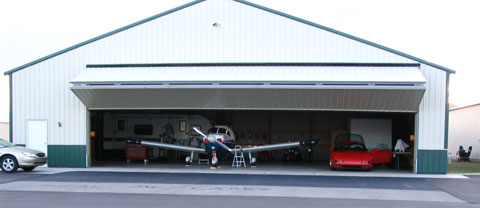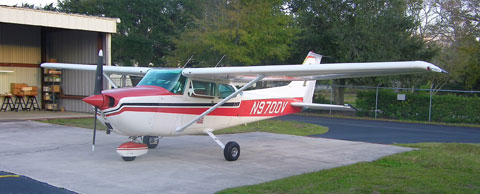
Larry Stencel would love to celebrate his 40-plus years as a pilot by buying himself a brand new general aviation airplane—but he won’t do it on the two-year plan.
When the retired aeronautical engineer who flies “continuously” but worries about passing third-class medical exams learned that AOPA and the Experimental Aircraft Association (EAA) had come up with a better way to keep pilots who fly recreationally aloft, his hopes soared.
Every pilot frets some when the calendar says it is time to visit the aviation medical examiner to renew a medical certificate. But after his last go-round, when high blood pressure complicated by nasty side effects from prescribed drugs gave him a nearly-uncontrollable cough and a certification scare, Stencel, 64, wondered where to go from there.
“I was asking myself, ‘What’s my end goal? What do I want to do?’” he said in a phone interview.
On March 20, AOPA and EAA presented the FAA with a petition seeking an exemption which, if granted, would give pilots who fly recreationally the option of getting a third class medical or, instead, participating in a recurrent online education program that will teach them how to self-assess their fitness to fly. The education program required to participate in the exemption would teach pilots how to conduct a thorough self-assessment, how to identify warning signs of pending serious medical conditions, show risk factor mitigation of common significant medical conditions, and demonstrate appropriate use of medications, such as understanding the effects of altitude on medication side effects. It would expand understanding of aeromedical factors and basic physiology, the aviation organizations said.
Stencel—already the owner of a Cessna 172 and a Piper PA-28, and mostly, a VFR pilot—thinks the proposal would be the perfect solution for him.
He also believes that he’s a perfect example of how the petition is right for GA.
“I am in the target group of people who need to be retained in aviation,” he said in an email message, with the word “the” capitalized for emphasis. “I've proven myself as being safe, I own two fine airplanes and can afford more airplane.”
Central Casting couldn’t have come up with a better figure to illustrate a pilot’s dedication and value to GA.

Residing in Palm Coast, Fla., half the year and in Wautoma, Wis., the rest, Stencel keeps his 1975 Cessna 172 hangared near his winter home, and his PA-28 close at hand during summers.
An airframe and powerplant mechanic, Stencel has owned the Cessna 172M for 27 years.
“Over that whole time, nobody’s touched it but me,” he said.
Since 1971 the military-aero-club-trained pilot has flown “continuously.” Now six years retired from a 21-year career in the Air Force, and then Northrop Grumman, he built a hangar that he calls a pilot’s dream.
Stencel flies the 975-nautical-mile route between his two bases regularly, under day VFR, “with very few exceptions.”
He subscribes avidly to the public interest justification for the petition, pointing out that if freed of the uncertainty about being grounded “for some nonsensical reason,” he’d proceed either to upgrade the Skyhawk’s panel, or take the plunge on a brand new airplane.
Then he’d put his two aircraft back into circulation for other pilots, further stimulating GA activity, he said.
Stencel stresses that he regards medical self-certification as serious business, noting that a pilot practices that art on every flight, regardless of the medical certificate that has been issued. The self-certification provisions now available to light sport pilots just strengthen the argument for other GA pilots, he said.
“If I can climb into a light sport airplane and fly you and me, what’s the difference between that and my Cessna 172, which I’ve been flying for 27 years? If can drive a 25,000-pound RV in Florida, then what’s the difference with an airplane?” he asked.
Although debates about medical and aircraft certification focus on specific regulations, Stencel says, it’s really a conversation about the future—a search for ways “to bring the younger kids back into aviation.” So it couldn’t hurt to remind the FAA that its founding act included a mission “to promulgate aviation,” he said.
For now, as he prepared to migrate north and attend his thirtieth EAA AirVenture at Oshkosh, Wis., this summer, Stencel was allowing himself to feel a little more upbeat about his aviation future.
“The FAA needs to approve this waiver,” he said.
The petition will have the best chance of success if members file comments in support. Member comments may be submitted online, in English, citing Docket Number FAA-2012-0350, and giving your name and mailing address. For tips on submitting comments, including topics to address and how to describe yourself as a pilot, AOPA and EAA have provided this guide.



